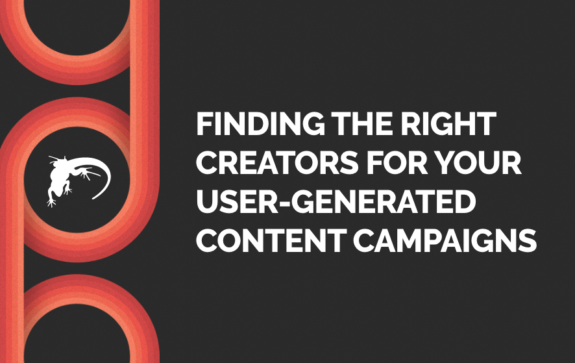15 Website Design Best Practices for 2024: Enhancing User Experience and Conversion Rates

In the constantly changing digital landscape, website design best practices for 2024 emphasize a seamless blend of aesthetics, functionality, and user experience.
Central to this is the principle of responsive design, ensuring websites adapt fluidly across a variety of full-size and mobile devices and screen sizes while maintaining the speed and SEO necessary to rank at the top of the Search Engine Results Pages (SERPs).
This year, we see a significant shift towards minimalistic layouts that prioritize content clarity and ease of navigation. The use of exciting and vibrant colors and bold typography to create engaging and memorable experiences is on the rise. Additionally, accessibility remains a key focus, with designers adopting WCAG (Web Content Accessibility Guidelines) to make websites usable for all, including those with disabilities.
With the ever-expanding integration of Artificial Intelligence (AI) for personalized user experiences becoming more prevalent, providing tailored content and interactive features based on user behavior and preferences is crucial as well.
Responsive Design Best Practices Take Center Stage
As we delve deeper into 2024, the importance of website performance and speed cannot be overstated. Optimizing for faster load times and smooth interactions is crucial, as users expect quick and efficient access to information.
Incorporating sustainable web design practices is gaining traction, reflecting a growing awareness of the internet’s environmental impact. This includes optimizing images and assets for lower data consumption and implementing green hosting solutions. Furthermore, data privacy and security are paramount, with designers and developers adopting robust security measures to protect user data.
As we look at the 15 best practices in website design for 2024, we identify the corresponding pain points as well as considerations revolving around creating intuitive, efficient, and environmentally conscious websites that strive to meet the diverse needs and preferences of users worldwide.
The 15 Best Practices in Website Design 2024
1. Embrace Minimalism as the Key to a Clutter-Free Website
PAIN POINT: Overwhelmed and distracted users abandoning cluttered websites.
In today’s landscape of website design, minimalism remains a timeless trend.
As we step into 2024, it’s more crucial than ever to adopt a clutter-free approach. Why? Because a minimalist design not only looks sleek but also significantly improves website loading times and user focus.
By eliminating unnecessary auditory and visual elements, you offer a clear path for users to follow, leading to a better overall user experience (UX). Remember, in the world of website design, less is often more.
2. Optimize for Seamless Mobile Responsive Design
PAIN POINT: Frustration and loss of mobile users (over 65% of the search volume) due to non-responsive design.
With mobile internet usage consistently on the rise, responsive design is no longer optional. It’s a necessity.
Best practices for web design in 2024 emphasize the importance of a website that adapts smoothly to any screen size. This includes not just visual appeal but also functionality. A mobile-friendly website isn’t just about looking good; it’s about providing a consistent and accessible experience for all site visitors, no matter their device.
3. Boosting Engagement with Interactive Elements that Inspire User Participation
PAIN POINT: Boring, static websites lead to low user engagement and high bounce rates.
While this may sound counter-intuitive to our previous discussion — incorporating interactive elements is a trend that’s here to stay. From hover effects to dynamic scrolling, interactive features can significantly enhance user engagement.
They make your website not just a source of information but an experience. However, it’s essential to balance interactivity with usability. Too many interactive elements can be overwhelming, so it’s crucial to implement them in a way that adds value to the user journey.
4. Consistent Branding Builds Trust and Recognition
PAIN POINT: Inconsistent branding leads to confusion and distrust among visitors.
Consistency in branding across your website is a vital best practice and should be part of the design process your website designer enlists when strategizing your new site. This includes using consistent colors, fonts and typography, and imagery that align with your brand identity.
This consistency extends to all pages, especially the website home page design, which acts as the digital front door to your brand. A cohesive design starting from the first Hero section ‘above the fold’ instills trust and professionalism, making your site more memorable — someone customers want to do business with!
5. Accessibility is a Necessity, Not an Afterthought
PAIN POINT: Excluding a significant portion of potential users due to inaccessible design and functionality.
Web accessibility is not just a trend but a fundamental aspect of web design standards and best practices. And to be fair, it’s the very least we should do out of respect for our visitors and customers.
In 2024, designing for accessibility means ensuring that your website is usable by people of all abilities and disabilities. This includes considerations like color contrast, keyboard navigation, and screen reader compatibility. By prioritizing accessibility, you cater to a broader audience and demonstrate social responsibility and inclusivity.
6. Speed Optimization for Faster Loading Times & Happier Users
PAIN POINT: Impatient users leave due to slow-loading websites.
Website speed is a critical factor for both user experience and search engine ranking. Slow loading times are a significant pain issue for users, leading to high bounce rates. In 2024, optimizing your website’s speed is non-negotiable. This includes practices like compressing images, minimizing code, and using a content delivery network (CDN).
7. User-Centric Navigation Simplifies the User Journey
PAIN POINT: Users needing help with complicated or unclear navigation.
Site navigation is the roadmap of your website. In 2024, best practices for designing a website focus on user-centric navigation. This means creating a layout that’s intuitive, easy to use, and helps users find what they’re looking for without frustration. A well-thought-out navigation structure can significantly improve the overall user experience and, consequently, conversion rates.
8. High-Quality Content That Engages and Educates Your Audience
PAIN POINT: Outdated or irrelevant content creates disinterested users who will go elsewhere to find what they seek.
Content remains king in the realm of web design. High-quality, relevant content engages your audience and establishes your authority in your niche. Incorporating various content formats like videos, blogs, infographics, and podcasts can cater to different user preferences and increase engagement. Multiple formats also lend themselves to attractive social media opportunities that speak to potential customers.
9. Make a Statement with Bold Typography
PAIN POINT: Uninspiring and hard-to-read text leads to disengagement and an increased bounce rate.
Typography is a powerful tool in website design. It’s not just about readability but also personality. Bold, distinctive fonts can make a strong visual impact and contribute to your brand’s identity. However, balancing creativity with readability is vital to guarantee that your content is easily digestible.
10. Data-Driven Design Guides Your Users
PAIN POINT: Ineffective design choices lead to poor user experience and low conversion rates.
In 2024, data-driven design is a best practice that should be considered. You can make informed decisions about your website design by analyzing your user data. This includes understanding your user persona(s), including behaviors, preferences, and pain points. Data-driven adjustments can encourage more effective designs that capture the user’s attention and leads them through the sales funnel.
11. SEO Integration: Optimize for Visibility and Ranking
PAIN POINT: Websites with poor or non-existent SEO continually miss out on potential traffic.
SEO is an integral part of web design usability. In 2024, designing with SEO in mind means more than just keyword integration. It encompasses mobile optimization, fast loading times, high-quality content, and a secure website. An SEO-friendly website not only ranks higher in SERPs but also provides a better overall user experience.
12. Use Color Psychology to Influence Emotions and Actions
PAIN POINT: Unappealing color schemes cause adverse user reactions and low engagement.
Color is a powerful communication tool in website design. The right color palette can influence how users perceive your brand and even drive specific actions. In 2024, understanding color psychology and using it to your advantage will be crucial in designing an effective website.
13. Use Social Proof to Build Credibility
PAIN POINT: A lack of social proof will create a lack of trust from potential customers.
Social proof, like testimonials and reviews, plays a crucial role in building trust with your audience. In 2024, website design and displaying social proof can significantly influence visitor decisions, as it adds a layer of credibility to your brand.
14. Continuous Testing and Improvement
PAIN POINT: Stagnant websites can fail to meet evolving user expectations.
The best website designs are not static; they evolve based on user feedback and testing. Continuous A/B testing, user feedback collection, reviews, and analytics monitoring are essential for keeping your website relevant and effective. This approach ensures that your website remains aligned with user needs and preferences.
15. Prioritize User Data Protection
PAIN POINT: Your site will suffer from user distrust and possible legal issues without adequate website security.
In an era where data breaches are increasingly common, website security is paramount—best practices for web design in 2024 heavily emphasize securing user data.
This includes implementing HTTPS, regular security audits, and transparent privacy policies. A secure website not only protects your users but also enhances your brand’s credibility.
Here’s to a Healthy 2024 for Your Website!
Adhering to these 15 website design best practices in 2024 is crucial for creating a user-friendly, engaging, and effective online presence. From prioritizing user experience to ensuring responsive and accessible design, each of these practices plays a vital role in the success of your website.
By addressing common pain points and focusing on user-centric design, you can increase engagement, improve conversion rates, and build a robust and trusted brand online that will serve you and your company well.
If you are considering a website refresh or building a new site from scratch, contact Lounge Lizard to learn more about capturing customers through innovative and design-forward website creation. We have experienced Brandtenders ready to discuss your website design and development, including SEO and content strategy.






